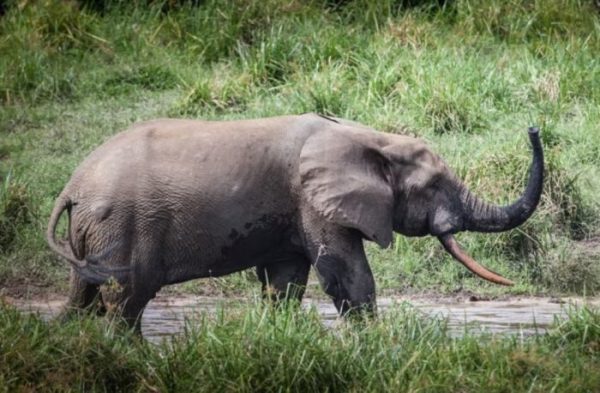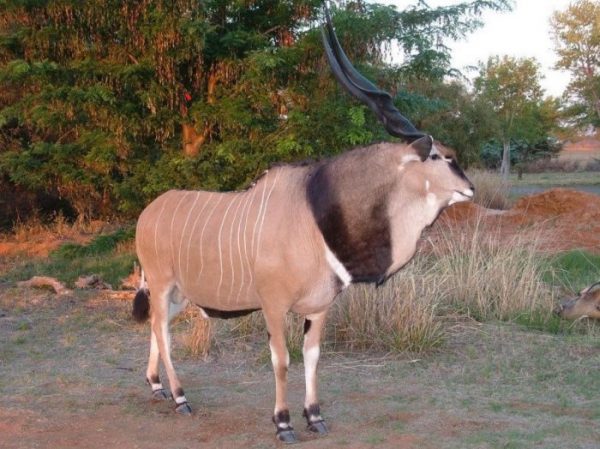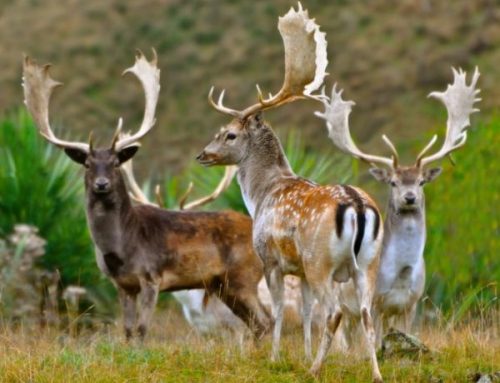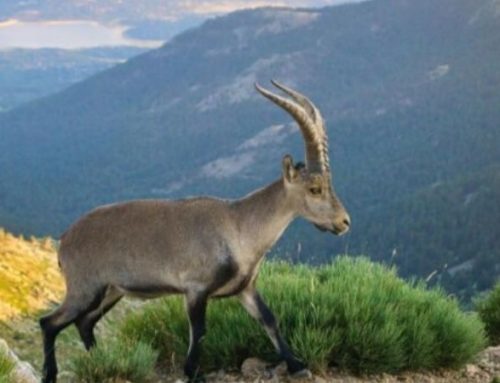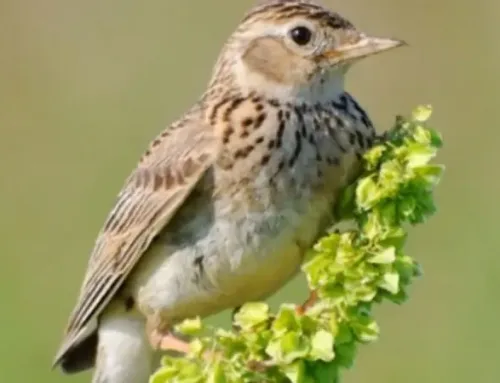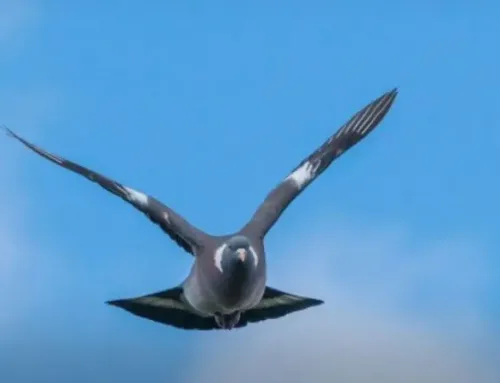The legacy of hunting safaries in Cameroon continues
With its diverse hunting grounds, from north to south, Cameroon is one of the most interesting countries in West Africa from a hunting safari point of view. A unique and different destination, ideal for the most adventurous hunters and lovers of challenges.
Depending on where you decide to hunt, you will find different terrains and animals.
South Cameroon
To the south of the country, the “rainyforest” – or rainforest – offers the possibility of an extreme, strenuous and demanding hunt. The animals that mainly reign in this habitat are the bongo, the forest elephant, characterized by its thin and dark tusks, and the sitatunga.
The Cameroon Sitatunga
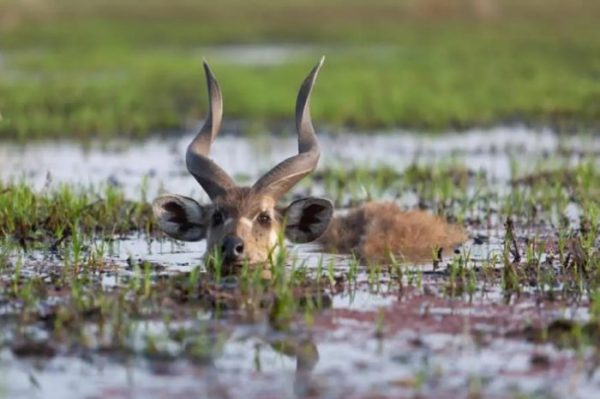
Sitatunga: Africa’s amphibious antelope
The Cameroon Sitatunga, scientifically known as Tragelaphus spekii gratus, is a subspecies of the Sitatunga antelope native to Central Africa, particularly found in the marshy areas, swamps, and wetlands of Cameroon, as well as in some neighboring regions like Nigeria and Chad.
This unique antelope has adapted exceptionally well to its aquatic habitat. It possesses elongated and splayed hooves that make it highly proficient in navigating through muddy and swampy terrains. The Cameroon Sitatunga’s ability to maneuver in such environments is attributed to its elongated hooves that help it distribute its weight, preventing it from sinking into soft ground.
Cameroon Sitatungas have a reddish-brown coat with a coarse and shaggy appearance, particularly in males. Both males and females have spiraled, corkscrew-shaped horns, with those of the males being larger and longer, typically reaching up to 85 centimeters in length.
These antelopes are typically shy and reclusive, often living in solitude or small groups. Their diet mainly consists of aquatic vegetation, such as reeds, grasses, and water plants, which are abundant in their marshy habitats.
L’Antilope Bongo: Un Tesoro Elusivo
Nelle ombre misteriose delle foreste pluviali dell’Africa centrale e occidentale, vive una delle creature più affascinanti e elusive: l’antilope Bongo. Con il suo manto arancione-rossastro attraversato da strisce bianche verticali, il Bongo è una visione di pura eleganza e grazia, perfettamente adattato a fondersi con l’ambiente circostante. Le sue corna a spirale, possedute sia dai maschi che dalle femmine, aggiungono un tocco di maestosità a questo straordinario animale.
Immaginate di immergervi nel cuore della foresta pluviale del Camerun, dove l’aria è intrisa di umidità e il canto degli uccelli esotici risuona tra gli alberi imponenti. È qui che inizia la vostra avventura di caccia al Bongo, un’esperienza che promette emozioni senza pari e una connessione profonda con la natura selvaggia.
La caccia al Bongo è un’impresa riservata ai cacciatori più esperti e pazienti. Questo animale notturno e crepuscolare, che si nutre di foglie, frutti e corteccia, si muove con agilità silenziosa attraverso la fitta vegetazione. Avvistare un Bongo è considerato un privilegio raro, un momento che incanta e riempie di meraviglia.
Per affrontare questa sfida, avrete bisogno della guida esperta di abitanti locali, che conoscono intimamente ogni angolo della foresta e le abitudini del Bongo. Questi esperti tracciatori possono leggere i segni lasciati dall’animale, dalle impronte fresche ai segni di brucatura, conducendovi attraverso sentieri nascosti e angoli remoti della foresta.
Indossate abbigliamento leggero ma resistente all’umidità, calzature adatte a terreni irregolari e portate con voi un fucile calibro .375 o superiore, per garantire un abbattimento pulito e rispettoso.
La caccia al Bongo richiede una combinazione di pazienza e agilità. Al mattino presto, con la luce appena filtrante attraverso le chiome degli alberi, inizierete a seguire le tracce lasciate durante la notte. Ogni passo è misurato, ogni suono è attentamente ascoltato, mentre vi muovete silenziosamente tra la vegetazione.
Un’altra tecnica coinvolge l’appostamento nei pressi dei percorsi abituali di alimentazione o dei punti d’acqua. Qui, immersi nel silenzio della foresta, attendete con trepidazione l’apparizione del Bongo, il cuore che batte forte in attesa del momento decisivo.
Cacciare il Bongo nella foresta pluviale del Camerun non è solo una sfida venatoria, ma un’esperienza sensoriale totale. La foresta, con la sua straordinaria biodiversità, è un teatro vivente dove ogni passo rivela nuovi colori, suoni e forme di vita. L’aria è densa di umidità e profumi esotici, e il paesaggio si rivela in tutta la sua maestosità naturale.
The forest elephant
The forest elephant (Loxodonta cyclotis) found in Cameroon is one of two species of African elephants, the other being the larger savanna or bush elephant (Loxodonta africana). Forest elephants are primarily found in the dense tropical forests and rainforests of Central and West Africa, including regions within Cameroon.
These elephants are smaller in body size and trophies (tusks) compared to their savanna counterparts, possessing straighter and downward-pointing tusks. They have rounded ears and more oval-shaped feet, which are better suited for navigating the dense vegetation of the forest floor. Their unique characteristics enable them to thrive in the dense, lush, and often challenging terrains of the tropical forests.
Forest elephants play a crucial role in their ecosystem, shaping the vegetation and contributing to seed dispersal. They are herbivores, feeding on a diverse diet that includes leaves, fruits, bark, and other vegetation found in their forest habitat.
Unfortunately, forest elephants are facing significant threats due to poaching for their tusks, which are highly valued in the illegal ivory trade. Conservation efforts, including selective legal hunting, protected areas and anti-poaching measures, are being implemented to safeguard these elephants and their habitats in Cameroon and other countries where they reside. These efforts aim to ensure the sustainable hunting that provides the funds to protect this unique and important species.
North Cameroon
To the north, however, the shrubby savannah on the Faro or Benuè rivers is home to the typical fauna of West Africa: the north western buffalo, the roan, the western red hartebeest, Buffon’s kob, harnessed bushbuck and many other small antelopes.
The Lord Derby Eland
However the undisputed king of this splendid part of Africa remains the Lord Derby eland.
This latter species is a splendid antelope, much more massive than its eastern and southern relatives, whose hunting becomes an epic challenge for the hunter who follows its trail until the inevitable conclusion.
The Lord Derby Eland, also known as the Giant Eland or Taurotragus derbianus, is one of the largest antelopes in existence. This species is native to West and Central Africa, primarily inhabiting regions such as Guinea, Senegal, Mali, and other areas.
This impressive antelope is recognizable for its remarkable size and robust structure. Male specimens can reach a shoulder height of over 1.8 meters and weigh about a ton. They have a reddish-fawn or dark gray coat, with white vertical stripes on the front of the body and thin white lines on the legs. Both males and females have horns, but those of the males are longer and sturdier, curving upward and sometimes exceeding a length of one meter.
The Lord Derby Eland prefers open habitats such as wooded savannas, grassy plains, and open plains. It lives in small groups composed of a few individuals but may join larger herds during the dry season or migration. Its diet mainly consists of grasses, leaves, shoots, and occasionally shrubs.
This species is an huge hunting trophy.
Climate and apparels
The soil in the dry and arid savannah is hard and difficult. The dry leaves creak under your boots and warning the animals of the presence of the hunter, make attempts to approach even more complex.
Hunting in Cameroon takes place on tracks and excellent physical preparation is required. The hunter needs good light and breathable equipment, the temperatures in this area are often very high. Rifles with a caliber from 300 WM and upward are ideal. For the forest elephant we suggest a caliber starting from 375 HH.

Express Rifles
Express rifles are powerful, high-caliber firearms primarily designed for hunting large and dangerous game animals. These rifles are known for their strength, accuracy, and ability to deliver a heavy and effective shot at short to medium ranges. They’re commonly used in Africa and other regions where hunters pursue big game like elephants, buffalo, rhinoceros, and large predators.

The Holland & Holland ‘Royal’ Double Rifle is available in any rimless, flanged or belted calibre. Each gun has individually regulated chopper-lump barrels, a time-proven side lock mechanism, bolts, and ejectors.
Key features of express rifles include:
- Caliber and Power: Express rifles usually have large-caliber ammunition, such as .375 H&H Magnum, .416 Rigby, .470 Nitro Express, and even larger calibers. These cartridges pack substantial power, delivering strong impact and deep penetration.
- Heavy Bullets: These rifles fire heavy, solid bullets specifically designed for deep penetration and stopping power. These bullets are intended to incapacitate large game quickly and effectively.
- Double Rifles: Many express rifles are side-by-side double rifles, which offer rapid follow-up shots. This design allows for two shots in quick succession, crucial when facing dangerous game at close range.
- Iron Sights: Traditionally, express rifles feature open or “iron” sights instead of scopes. This allows for quick target acquisition at short distances where game might suddenly appear.
- Recoil: The larger calibers used in express rifles generate significant recoil, requiring the shooter to manage the gun’s kickback to maintain accuracy.
- Reliability: These rifles are built for durability and reliability, as they are often used in challenging and rugged terrains.
- Purpose-Built: Express rifles are purpose-built for specific game hunting and are not typically used for recreational shooting or target practice due to their power and expense.

Chapuis Elan Express perfect suits for African safaries
When hunting big game, especially in regions with potentially dangerous animals, it’s essential to use appropriate rifles and ammunition for both the safety of the hunter and the ethical treatment of the animal.
Of fundamental importance are good binoculars and a supply of saline supplements will be more than necessary, the outfitter will take care of the water.
A hunting safari to Cameroon is considered a must for all those hunters, lovers of Africa and its challenges.
Our extraordinary trackers and the welcome of the outfitter will make this African adventure unique, amidst rich and wild fauna and wild territories. You can choose 6, 8 or 12 day hunting programs.


